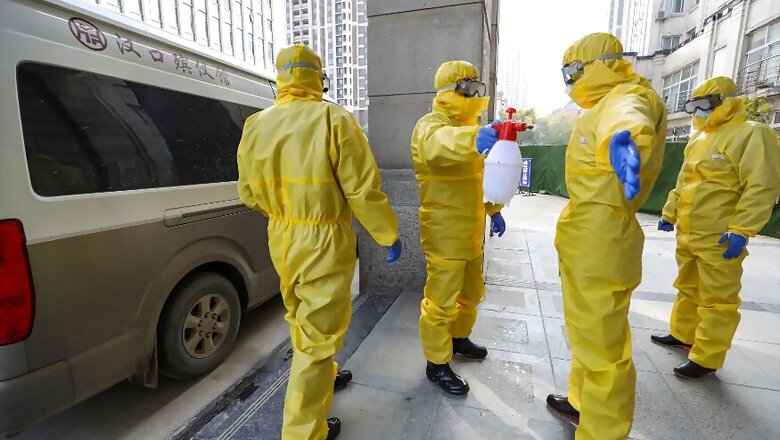
views
Paris: After a sudden jump in the number of deaths caused by the novel coronavirus in China, here is what we know about the disease, how it spreads and how it might be contained.
What's the toll?
China's official death toll spiked dramatically on Thursday after authorities changed their counting methods.
While fuelling fears that the epidemic may be far worse than being reported, the new method uses lung imaging and could help faster diagnosis.
So far more than 60,000 people have been infected, the vast majority of them in China's Hubei province, the epicentre of the outbreak.
A total of 1,370 are known to have died from the virus, all but three in China.
Calculating the mortality rate of the new virus strain is tricky because of the time lag between reported cases and confirmed deaths.
One study from Imperial College this week put the mortality rate at 18 percent inside Hubei province.
Globally however the toll is likely to be far lower -- between 0.5 and 4.0 percent of cases, the study said.
If this bears out, it is likely that the novel coronavirus is less deadly than other strains, such as SARS and Mers, with mortality rates of 9.5 percent and 34.5 percent, respectively.
How infectious is it?
According to a study in the New England Medical Journal by Chinese researchers, each person who falls ill with coronavirus will infect 2.2 others on average.
That is a higher rate than winter flu (1.3), lower than an infectious disease such as measles (more than 12), and comparable to SARS (3) -- the last major virus that broke out in China, in 2002-03.
WHO chief Tedros Adhanom Ghebreyesus has said the key question is how quickly the disease is spreading beyond China.
"The detection of a small number of cases may indicate more widespread transmission in other countries; in short, we may only be seeing the tip of the iceberg," he warned in a recent tweet.
A study this week, which has yet to be peer-reviewed, estimated that transmissions in Wuhan -- the city at the centre of the outbreak -- were likely to peak in mid-February.
Rowland Kao of the University of Edinburgh welcomed the research but cautioned: "It does not imply that the disease is necessarily under control.
"If previously unexposed populations become infected, the outbreak could start rising again," he said.
When is it contagious?
Scientists initially thought the virus became contagious several days after symptoms started to appear, as happened with SARS, Arnaud Fontanet of the Institut Pasteur told AFP.
They now think it could be infectious earlier than that.
"Today, everybody agrees that the contagious period starts as soon as symptoms appear," said Fontanet, a specialist in tracking emerging diseases.
There had even been a few cases of transmission from people who showed no symptoms, he added.
One reason these cases are rare is that coughing is a major means of transmission -- and a symptomless carrier does not cough.
Despite rumours to the contrary, a study published Wednesday in the Lancet medical journal found no evidence that pregnant women suffering from the virus can pass it to their babies.
What are the symptoms?
A study of 99 coronavirus patients published last month concluded that around half of cases occurred in people with underlying chronic diseases, such as heart disease and diabetes.
All patients had pneumonia, most had a fever, 80 percent were coughing and more than half had trouble breathing.
Identifying coronavirus symptoms is all the more important -- and difficult -- because of a simultaneous epidemic of seasonal flu, which has similar symptoms.
Where did it come from?
Many animals are capable of transmitting viruses to other species, and nearly all strains of the coronavirus contagious to humans originated in wildlife.
Bats are known carriers of the latest strain of the disease, but scientists think that the virus was spread to humans in Wuhan via another mammal species.
Chinese researchers last week suggested that the pangolin -- a widely trafficked and endangered mammal -- could be the "missing link" that transferred the disease to humans.
The official name for the virus -- which is in the same family as SARS -- is SARS-CoV-2, while the name given to the disease it causes is COVID-19.


















Comments
0 comment